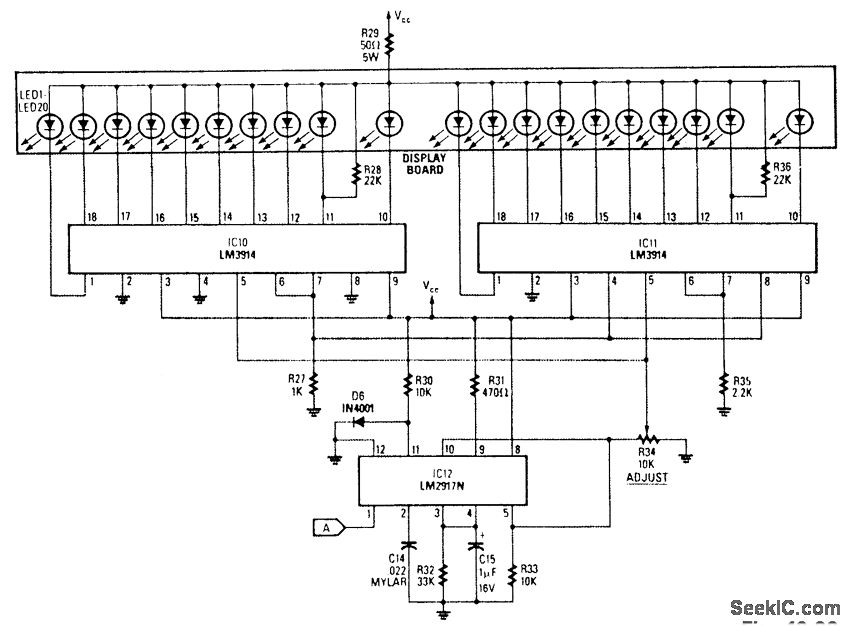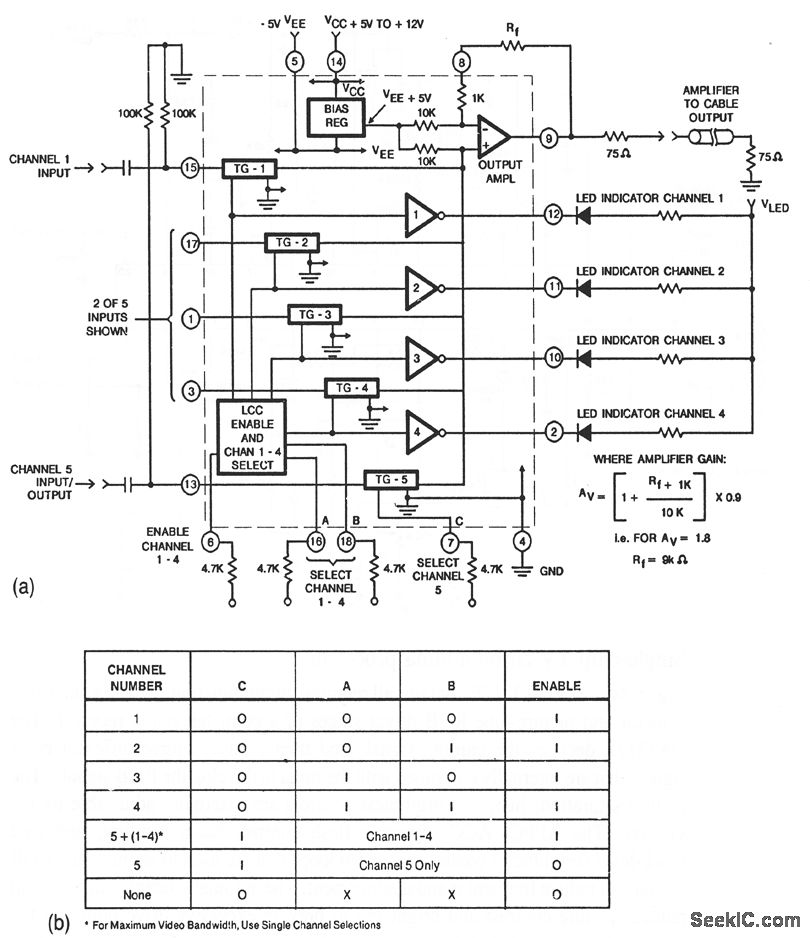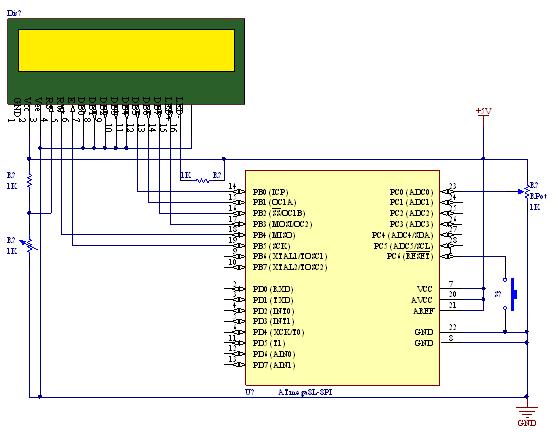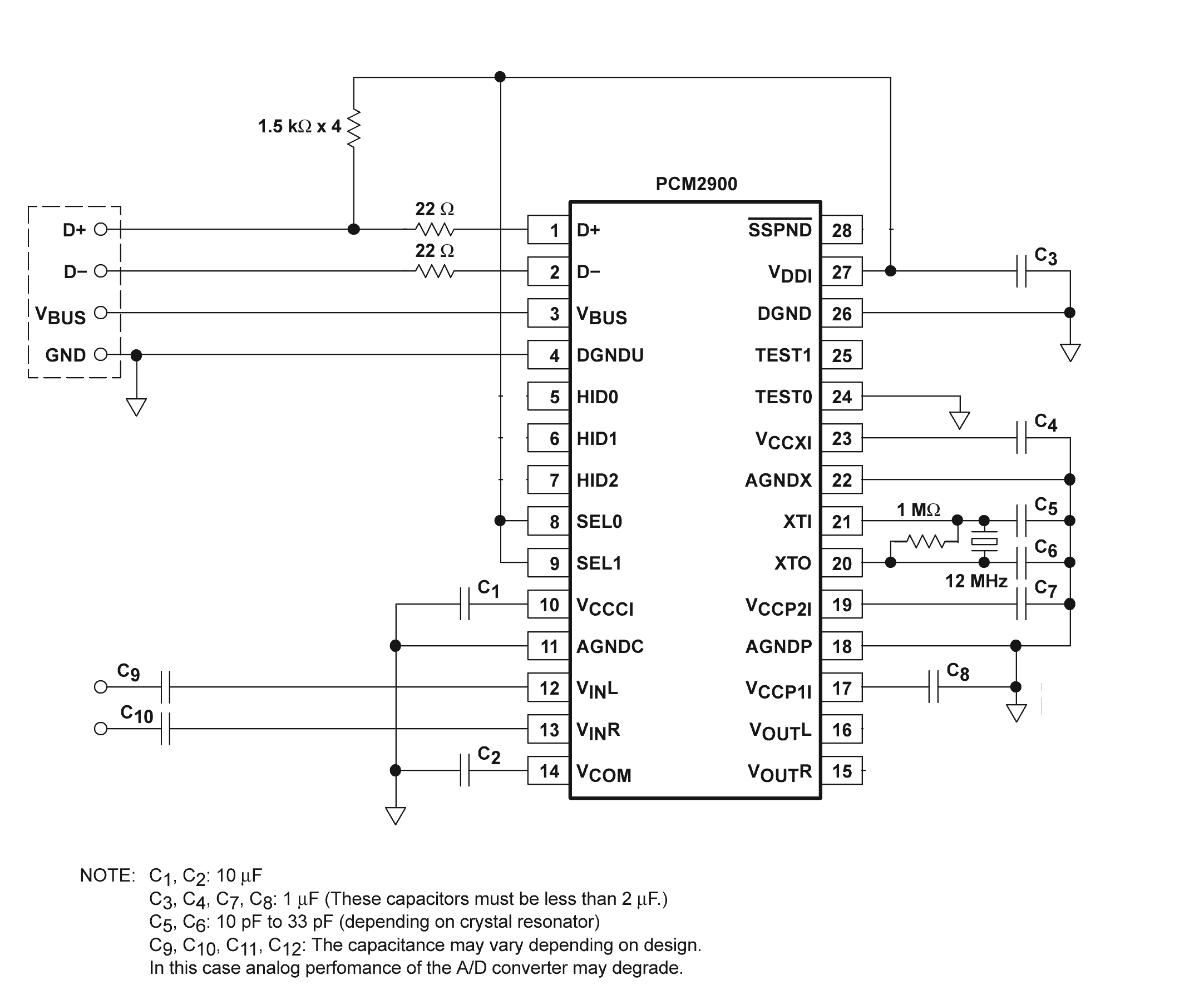
Analog multiplier
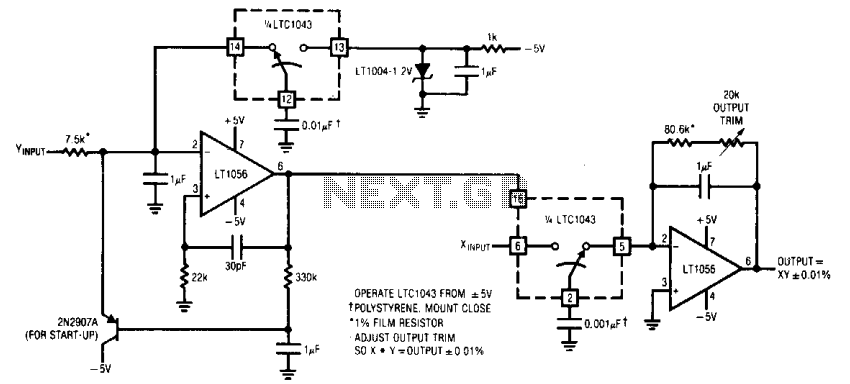
The F-V input frequency is locked to the V-F output because the LTCIG43's clock is common to both sections. The F-V's reference is used as one input of the multiplier, while the V-F provides the other. To calibrate, short the X and Y inputs to 1.7320 V and trim for a 3-V output.
The described circuit utilizes a frequency-to-voltage (F-V) converter and a voltage-to-frequency (V-F) converter, both of which are synchronized by a shared clock signal generated by the LTCIG43. This synchronization ensures that the output frequency of the F-V converter directly corresponds to the input voltage level, while the V-F converter translates this frequency back into a voltage level.
In practical applications, this configuration is essential for systems requiring precise frequency measurement and control, such as in digital signal processing or communication systems. The F-V converter takes an input frequency and converts it into a proportional voltage, which is then fed into the multiplier. The output of the multiplier is influenced by the voltage from the V-F converter, which serves to maintain the stability and accuracy of the system.
Calibration of the circuit is a critical step to ensure precision in operation. By shorting the X and Y inputs to a specific reference voltage of 1.7320 V, the circuit can be fine-tuned. This adjustment is made to achieve a precise output of 3 V, which may represent a standard reference level for subsequent processing stages. The calibration process may involve using a variable resistor or potentiometer to adjust the gain of the multiplier, ensuring that the output remains consistent under varying input conditions.
Overall, this circuit configuration is a robust solution for applications requiring accurate frequency-to-voltage and voltage-to-frequency conversions, with the calibration process allowing for fine-tuning to meet specific operational requirements.The F — V input frequency is locked to the V — F output because the LTClG43's clock is common to both sections. The F — V's reference is used as one input of the multiplier, while the V — F furnishes the other.
To calibrate, short the X and Y inputs to 1.7320 V and trim for a 3-V output.
The described circuit utilizes a frequency-to-voltage (F-V) converter and a voltage-to-frequency (V-F) converter, both of which are synchronized by a shared clock signal generated by the LTCIG43. This synchronization ensures that the output frequency of the F-V converter directly corresponds to the input voltage level, while the V-F converter translates this frequency back into a voltage level.
In practical applications, this configuration is essential for systems requiring precise frequency measurement and control, such as in digital signal processing or communication systems. The F-V converter takes an input frequency and converts it into a proportional voltage, which is then fed into the multiplier. The output of the multiplier is influenced by the voltage from the V-F converter, which serves to maintain the stability and accuracy of the system.
Calibration of the circuit is a critical step to ensure precision in operation. By shorting the X and Y inputs to a specific reference voltage of 1.7320 V, the circuit can be fine-tuned. This adjustment is made to achieve a precise output of 3 V, which may represent a standard reference level for subsequent processing stages. The calibration process may involve using a variable resistor or potentiometer to adjust the gain of the multiplier, ensuring that the output remains consistent under varying input conditions.
Overall, this circuit configuration is a robust solution for applications requiring accurate frequency-to-voltage and voltage-to-frequency conversions, with the calibration process allowing for fine-tuning to meet specific operational requirements.The F — V input frequency is locked to the V — F output because the LTClG43's clock is common to both sections. The F — V's reference is used as one input of the multiplier, while the V — F furnishes the other.
To calibrate, short the X and Y inputs to 1.7320 V and trim for a 3-V output.

